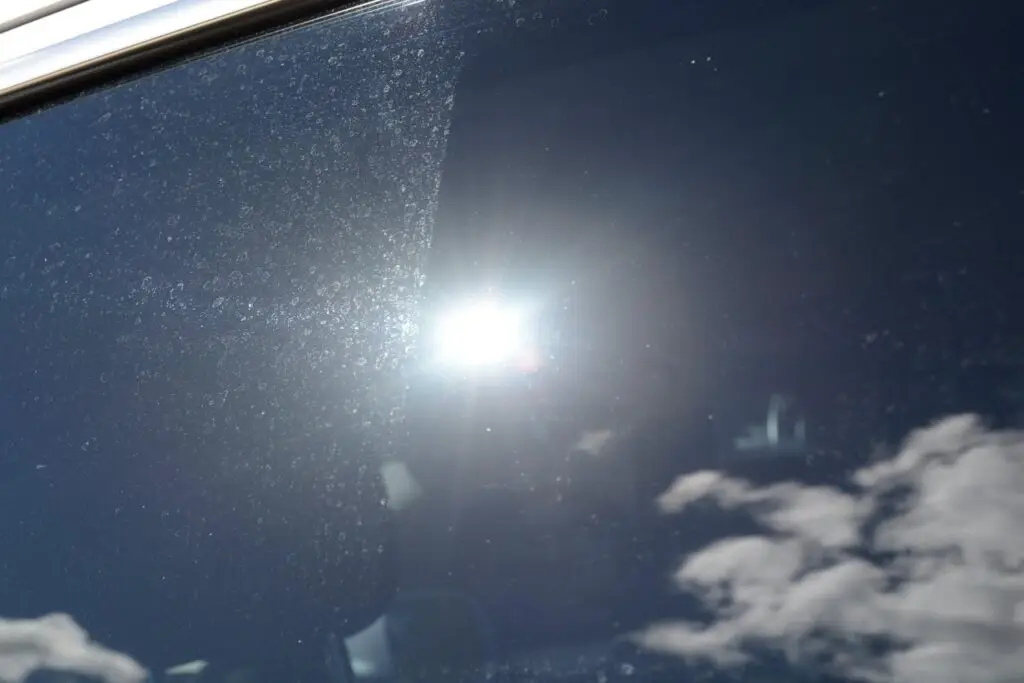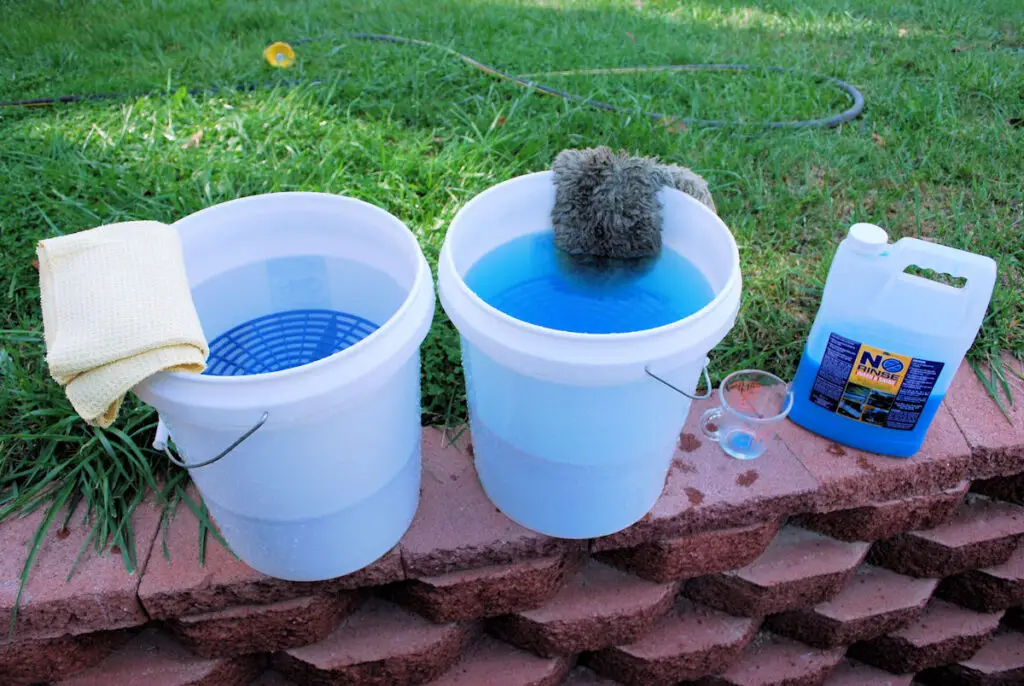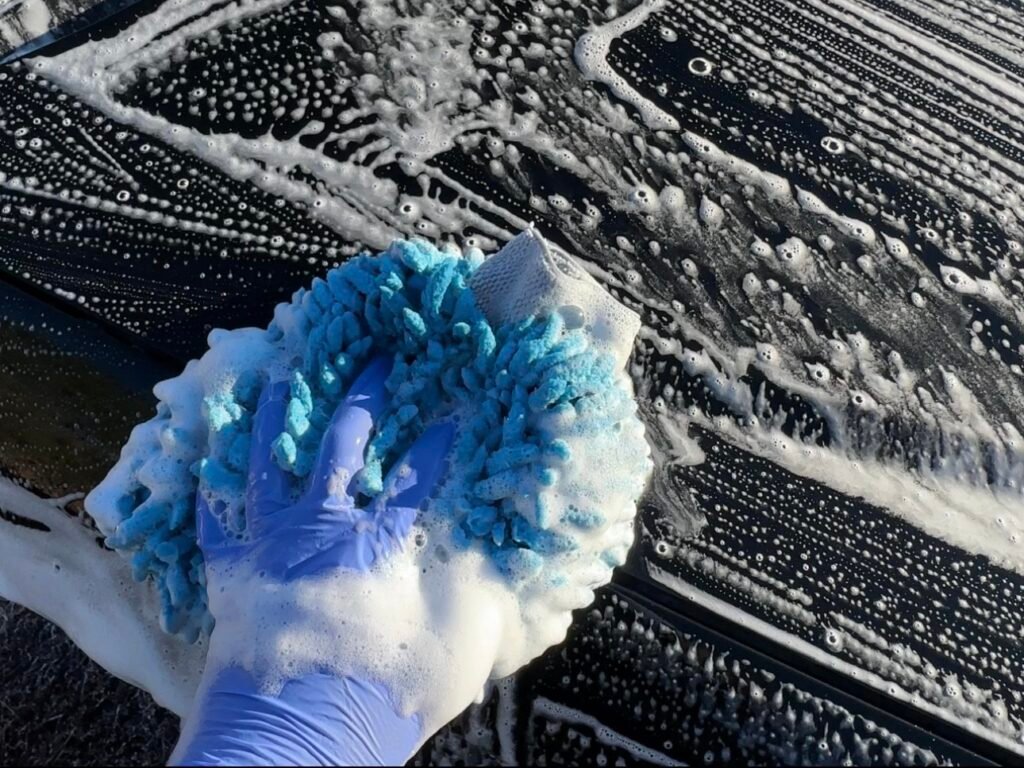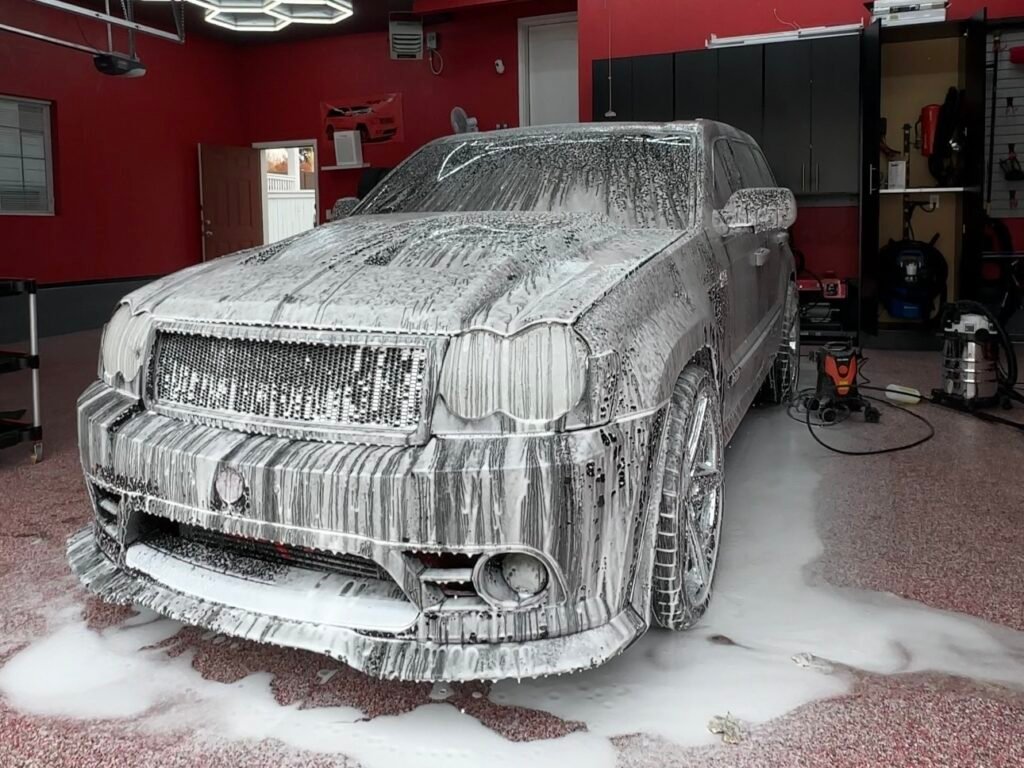10 tips that will save you from destroying your car. Plus tools and products that will help you detail your car safely.
1. NEVER use Dish Soap to Clean your car.
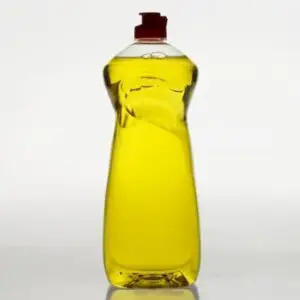

A Novice car washer might opt to use dish soap to wash their car. “Hey, it cleans my dishes pretty darn well. So there’s no way it won’t clean my car!” While that is a fair line of reasoning we are here to stop you right there.
While dish soap effectively cuts through grease on dishes, it’s not suitable for your car’s finish. Dish soap is often way too harsh for automotive paint and can strip away protective wax layers and in some extreme cases, your paints clear coat! This leaves your vehicle vulnerable to environmental contaminants, UV rays, and other elements that can dull the paint and contribute to quicker wear and tear. Leaving your paint looking dull.
Opt for a pH-balanced car wash shampoo designed specifically for automotive surfaces to maintain your car’s shine and protection. Some of our favorites are Meguiars’ Gold Class or Adam’s Polishes Car Shampoo. These can be found at Major Retailers such as Walmart or AutoZone
Dish soap should also never be used on interiors. Interiors are often coated with thin oil layers that protect and maintain your interior. Everything from plastics to leather can be harmed by dish soaps’ harsh properties. Without this layer, the sun will leave your interior looking faded and dull only after a few years. It is best to go for a Dedicated Interior Cleaner or a mild citrus Degreaser we recommend P&S Xpress Interior or 3D Orange Degreaser
2. Don't Skip The Pre-rinse.

Ever wonder how your cars paint got those tiny little scratches on the paint? Those come from grit and improper washing methods. Neglecting to rinse your car thoroughly before washing is a critical oversight. Rinsing helps remove loose dirt and debris that can scratch the paint during the wash. Causing your paint to go from looking shiny and beautiful to dull and unappealing. Imagine washing a sandy surface – the grit can act like abrasive sandpaper, causing swirls and scratches. A pre-rinse is a simple yet effective step in preventing unnecessary damage. You wouldn’t run sandpaper across your paint would you? So why Skip the Pre-rinse?
Take the time to hose down your car, focusing on areas where dirt accumulates, such as the lower panels and wheel wells. This preliminary rinse sets the stage for a safer and more effective washing process, preserving the integrity of your vehicle’s paintwork. You can use a Rinseless Wash as a prewash to loosen up dirt and grit on your vehicle. A great choice is Optimum No Rinse!
For many, it is already too late to prevent micro-scratches like in the picture listed above. No need to worry! Many detailers offer Paint Corrections and Polishing to fix the damage that has been done and revitalize your paint. Check out our Paint Correction Service to learn more on how it’s done!
3. Don't Neglect cleaning your wheels.

Overlooking the cleanliness of your wheels is a common mistake that can lead to both aesthetic and functional issues. Brake dust, a byproduct of brake pad wear, accumulates on wheels and, if left untreated, can cause long-term damage to the finish. Brake dust is not just unsightly; it contains metal particles that, when exposed to heat and moisture, can become corrosive. This corrosion can eat into the wheel’s coating and even penetrate the metal, resulting in pitting and permanent damage.
Regular wheel cleaning is essential to prevent this buildup. Use a designated wheel cleaner that is safe for your wheel’s finish, as some formulations are tailored for specific materials like alloy, chrome, or painted wheels. We recommend P&S Brake Buster A soft brush or wheel-cleaning tool can help reach intricate areas. Neglecting wheel maintenance not only impacts the appearance of your car but also jeopardizes the longevity and structural integrity of your wheels. By incorporating wheel cleaning into your detailing routine, you ensure a comprehensive and protective approach to maintaining your vehicle’s overall aesthetic appeal and functionality.
4.Don't Detail in direct sunlight
Detailing your car in direct sunlight may seem convenient. After all there’s nothing quite like feeling that refreshing water on your skin on a hot day! However direct sunlight poses risks to the effectiveness of the products used and the overall finish. Sunlight causes products like wax, sealant, or detailing sprays to dry too quickly, leaving behind streaks, uneven coverage, and residues.
Moreover, water spots become a significant concern. When water droplets containing minerals are left on the surface and exposed to direct sunlight, they evaporate, leaving behind these minerals known as Water Spots. These spots can etch into the paint or glass, becoming more challenging to remove over time.
To avoid these issues, choose a shaded or indoor area for detailing. This not only allows for proper application and drying of products but also minimizes the risk of water spots. Patience in finding the right conditions for detailing ensures a smoother application process and a more polished, spot-free finish for your vehicle.
If your vehicle has water spots, don’t worry! There are multiple methods to remove spots from your vehicle! The best and most reliable way to remove Water Spots is to give your car a polish! Check out our polishing process to learn more on how its done! Another Method is to use a Quick Detail spray or a Water Spot remover spray. Adams Polishes makes the best sprays!
5.Use the 2 Bucket Wash Method
The two-bucket wash method is a popular and effective technique in car detailing that aims to minimize the risk of swirls and scratches during the washing process. It involves using two separate buckets – one for soapy water and another for rinsing the wash mitt or sponge. This method is designed to prevent dirt and debris picked up from the car’s surface from being reintroduced during the wash, reducing the chances of causing micro-scratches.
In the two-bucket method, the first bucket contains the soapy water used for washing the vehicle, and the second bucket holds clean water for rinsing the wash mitt after each pass. We recommend The Rag Companys’ Ultra Wash Mitts This helps keep the wash mitt or sponge free of contaminants, ensuring that only clean soapy water is applied to the car’s surface. The use of grit guards in each bucket further enhances the method by trapping dirt at the bottom of the bucket and preventing it from circulating back onto the wash tool.
By employing the two-bucket wash method, you maintain a higher level of cleanliness throughout the washing process. This precaution is especially crucial during the initial rinsing and washing stages when the bulk of loose dirt and debris is removed. Ultimately, the two-bucket wash method contributes to a safer and more effective car washing routine, preserving the paint finish and promoting a swirl-free, scratch-free finish.
6.Protect your skin!
While this is technically not a tip to protect your car, it is a tip to protect yourself! What fun is an awesome car if your not healthy enough to drive it? One crucial aspect often overlooked in car detailing is the importance of protecting your skin, especially when dealing with harsh chemicals commonly used in the detailing process. Many detailing products, including cleaners, degreasers, and certain compounds, contain powerful chemicals that can be harmful to the skin upon prolonged contact.
Exposure to these chemicals without proper protection can lead to skin irritation, dryness, or even more severe conditions. Some chemicals may contain caustic substances that can cause burns or allergic reactions. To mitigate these risks, wearing gloves is a simple yet effective measure that provides a protective barrier between your skin and the potentially harmful substances. Furthermore, these harsh chemicals can be absorbed into your skin and into your bloodstream through a process called Transdermal Absorption.
Choosing the right type of gloves is essential to ensure adequate protection. Nitrile or Latex gloves are popular choices in the detailing industry due to their resistance to chemicals and durability. These gloves not only shield your skin but also offer dexterity for intricate detailing tasks.
Prioritizing skin protection not only safeguards your health but also allows you to focus on the detailing process with peace of mind, ensuring a safer and more enjoyable experience for both professionals and enthusiasts alike.
7.Don't use Too Much Water or Cleaners In your Interior!
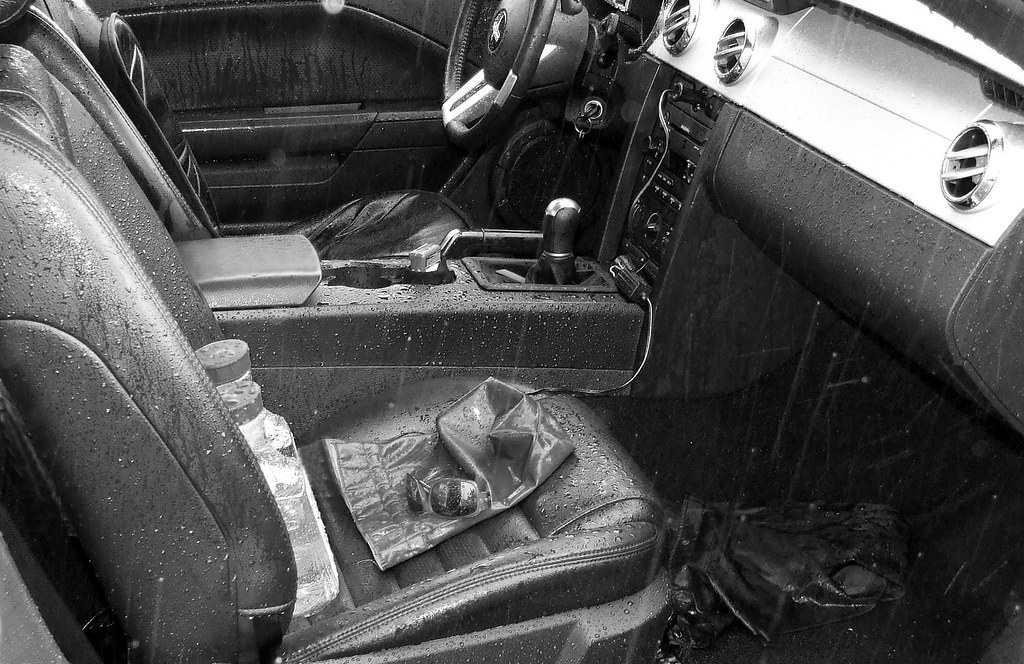
Electrical Components: When it comes to detailing your car’s interior, it’s crucial to be mindful of the numerous electrical components that modern vehicles house. These include intricate wiring systems, sensitive sensors, and electronic control units. Exposing these elements to excessive water poses a significant risk of seepage, leading to malfunctions and potential short circuits. The intricate nature of these components means that even a small amount of water infiltration can result in issues with the car’s electrical systems. To safeguard against these problems, it’s advisable to use a targeted and controlled approach to cleaning, minimizing the risk of water reaching these critical areas.
Mold and Mildew Growth: One often overlooked consequence of using too much water during interior detailing is the increased risk of mold and mildew growth. A damp environment, especially in areas with inadequate ventilation, provides an ideal breeding ground for these unwelcome intruders. Mold not only causes unpleasant odors but can also pose health risks and compromise the integrity of upholstery and carpets. Striking the right balance between effective cleaning and preventing excess moisture is paramount. Opting for cleaning methods that use minimal water and ensuring thorough drying after each session are essential practices to prevent the onset of mold and mildew in your car’s interior.
The Power of Steam: A great alternative to using water and liquid cleaners is Steam! A pressure steam cleaner precisely targets hard-to-reach areas, ensuring a comprehensive clean without risking water damage to sensitive components. Embracing sustainable practices, steam cleaning minimizes water usage, making it an environmentally friendly option. Its gentleness on surfaces, coupled with potent stain and contaminant removal, makes it ideal for preserving the integrity of materials like leather and fabric. A great affordable option for a high quality steam cleaner is the Costway Multipurpose Steam Cleaner.
8.Don't Use Brushes That Are Too Stiff!
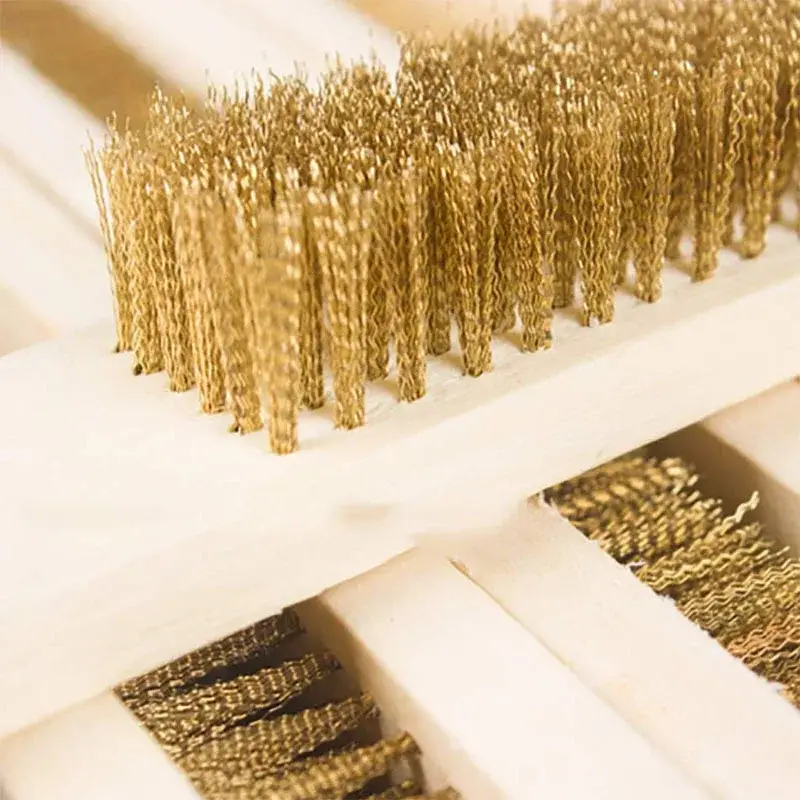
Using incorrect brushes during car detailing can lead to unintended damages and scratches, particularly when dealing with delicate surfaces. Stiff-bristle brushes that are not suitable for specific materials can compromise the integrity of the surface, leaving behind visible marks and imperfections. For instance, using a harsh brush on leather seats, dashboard surfaces, or other sensitive areas can cause abrasions and detract from the overall aesthetic appeal of the interior.
To avoid these issues, it’s crucial to invest in a variety of brushes designed for different materials and surfaces within your vehicle. Soft-bristle brushes, microfiber brushes, and detailing brushes with appropriate levels of gentleness are essential tools for ensuring a thorough and damage-free cleaning process. When selecting brushes, consider the texture and material of the surface you’re dealing with to choose the most suitable option that will effectively remove dirt and grime without causing harm.
Additionally, it’s advisable to test any new brush on a inconspicuous area before using it extensively. This precautionary measure helps ensure that the brush’s bristles are gentle enough for the specific surface, minimizing the risk of scratches or other damages. By using the right brushes for each part of your vehicle, you can maintain the cleanliness and condition of various surfaces without compromising their integrity during the detailing process. If you’re looking for Ultra soft Brushed we Recommend The Rag Companys’ Ultra Soft Brushes
Neglecting the undercarriage of your vehicle during the cleaning process can have significant consequences on its long-term health. The undercarriage is exposed to various elements such as road salt, grime, and debris, especially in regions where roads are frequently treated during winter. When these contaminants accumulate over time without proper cleaning, they create an environment conducive to corrosion, rust, and other forms of damage. The undercarriage is particularly vulnerable due to its proximity to the road and its constant exposure to harsh substances.
Regular cleaning of the undercarriage is essential to remove salt and debris that can cause accelerated corrosion. Salt, which is often used on roads to melt ice, is highly corrosive and can lead to rust if left unchecked. Additionally, road grime and debris can trap moisture against the metal components, further promoting the corrosion process. Taking the time to thoroughly clean the undercarriage during car detailing helps to prevent these issues and contributes to the overall longevity of your vehicle.
A great option for an undercarriage cleaning is the Hourleey Pressure Washer Undercarriage cleaner paired with the Ryobi 1800PSI 1.2 GPM Electric Pressure Washer
As you might have learned throughout thus article, detailing is the bedrock of preserving your vehicle’s appearance and structural integrity over time. Consistent care involves routine washing, waxing, and interior cleaning to counteract the effects of daily wear and environmental exposure. Regular washing not only keeps your car looking fresh but also protects the paint and finish from contaminants like bird droppings, tree sap, and road salts, which can be corrosive and lead to long-term damage if not promptly addressed.
In essence, incorporating regular maintenance into your automotive care routine is a proactive approach to preventing the gradual deterioration that can occur with neglect. By adopting these practices, you extend the life of your car’s exterior and interior components, ensuring it remains a source of pride and enjoyment for years to come. Consistency in care becomes an investment in preserving the overall value and aesthetic appeal of your vehicle.
